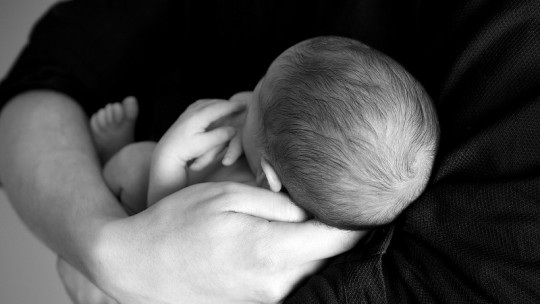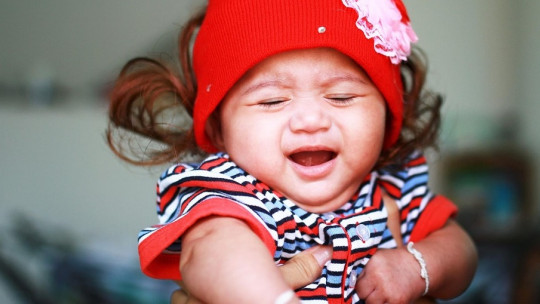
The importance of the maternal function in the first moments in which we are born is essential although it often goes unnoticed.
To understand to what extent it is important in our lives, it is worth examining what happens during the stage in which it plays a role in the protection, education and proportion of affection to the little ones.
What is the maternal function?
The maternal function in babies is understood as the desire to provide physical and emotional nourishment to infants.
Not only is it necessary to provide care related to physical well-being (food, shelter, grooming, cleaning, rest…) but also involves benign or positive affective stimuli Children who are deprived of these emotional stimuli frequently die from the condition called hospitalism.
Positive affective stimuli
Benign or positive affective stimuli are those that are born innately from the desire to love that new creature. They have to do with the sweet and soft tone of voice, the smiles, caresses and hugs, and the constant look into the other’s eyes.
Many times mothers who look at their children “get lost in the gaze of their loved one, and their loved one finds themselves in the gaze of their mother.” It is important to mention that For biological reasons, mothers usually have it easier when it comes to achieving a greater emotional bond with their children Therefore, they fulfill the maternal function more spontaneously.
However, the maternal function can be assumed by any person who has the disposition and emotional skills necessary to demonstrate affection.
The need for emotional contact
A baby is that human being totally dependent on the care of others It is a creature with innate tendencies to growth and development, but at this moment it is part of the bond with that maternal figure, who will allow it to continue with its own development.
At first, the maternal function is limited to providing shelter, support, protection, protecting him from dangers and meeting his physiological and emotional needs. It is a process that mothers learn to manage while breastfeeding their children ; hence the emotional importance of understanding the importance of breastfeeding.
The value of breastfeeding
When mothers breastfeed their children, they begin a warm bond (mother-child) sustained by looks, caresses, gestures, tone of voice, care… In this link, a kind of complicity is generated between both ; In this way, the mother learns to know the needs of her little one in the minimum calls for attention that she makes. That is to say, she easily manages to distinguish a hunger cry from a sleep cry, as well as knowing with a simple glance from her son if he is sick.
It is a special psychological condition that mothers develop during the weeks after birth. Emotionally, her baby is still a part of her, and therefore, she shows great sensitivity to what the baby expresses.
Babies learn to recognize their mother’s face in the most pleasant moments they experience at the beginning of their lives: breastfeeding. Feeding and looking at the mother’s face allows them to create that relationship of unity where the mother reflects what he means to her.
The mirror of the look
The look that takes place as part of the maternal function is the first mirror in which the child begins to differentiate himself and to react to the other, since he realizes the response that his presence generates in the other; Hence the importance of rewarding the constant gestures, movements and sounds that the child emits, since it is the moment when he begins to discover himself as a person.
At this moment the child depends on “the gaze”, the presence, the care of that maternal figure. They are the first steps towards the healthy construction of self-concept, self-esteem and security, and if there are anomalies in this phase, Developmental and behavioral problems may appear Some disorders that occur in adult life may have their roots in this type of defective attachments made during the first six months of life.
Breastfeeding in the current context
Unfortunately, Nowadays mothers have extremely limited possibilities to provide this type of bonding with their babies, or they are unaware of the importance of “looking at him” and transmitting security and tranquility. They assume breastfeeding, guaranteeing only food. For example, while breastfeeding you usually talk on the phone, check Facebook, read the newspaper… Your attention is on other things.
Sometimes, breastfeeding is also assumed as the mother’s right to breastfeed, assuming a position of triumph in favor of women when in the social sphere they are allowed or facilitated spaces to do so comfortably in public without any censorship. In both cases it is worth remembering that one cannot make the mistake of assuming it only as a mother’s right, It is the right of the child to be looked at, consented to, cared for, felt while being fed
The evolution of maternal function
As the child grows “emotionally” he begins to discover his own needs for exploring the environment This dynamic begins with behaviors such as thumb sucking, looking at objects, acquiring better and greater postures, dominating your body, throwing and holding objects, etc.
Safely move towards better dependency. The child is attentive to his environment, receptive and willing to capture sounds, movements, textures, etc Therefore, she begins to let go of her mother’s gaze. This process lasted from six months to three years.
favorite toy
In this stage, It is common for children to acquire an object, whether it be a blanket, pillow, pacifier, or simply a toy Little ones need this object to relieve the anxiety of separation from family members and to be able to start exploring the world.
It is the first belonging they acquire, it is “almost sacred” to them and accompanies them everywhere, regardless of their status. It may smell bad, be dirty, damaged, torn, discolored, but that object contains everything you need to detach yourself from your mother and feel safe in new spaces.
It is recommended to maintain that child-object union Generally, you will only be able to get rid of your object when it is linked to the feeling of security. Sometimes parents ask if they can wash it or change it for a new one, but it is important to clarify that it is very important for the child to keep the one they chose and feel sure that it is within their reach, that is, not to make derogatory comments such as : “Look how ugly it is, don’t be filthy, let’s change it.” For the child, the object means a source of security that goes beyond what we as adults can understand.
hiding
Finally he begins to hide from his mother, playing at disappearing or making her disappear ; It is the beginning or the first steps towards independence. The first games begin to be played secretly; The child explores the world but with the security of being able to return to his place of comfort: The arms of the person who protects him and gives him affection.
It is at this moment Both the baby and the mother must be prepared to assume this first separation safely and calmly ; without pressures or limitations. The mother must provide her son with new relationships and possibilities to understand her environment. From now on, the child will be prepared to begin the facet of play, where he finally does not need his “mother’s gaze”, he concentrates for extensive spaces playing in his own world and incorporating the participation of other children in his daily life. He is prepared to continue and develop as an independent and emotionally stable being.








